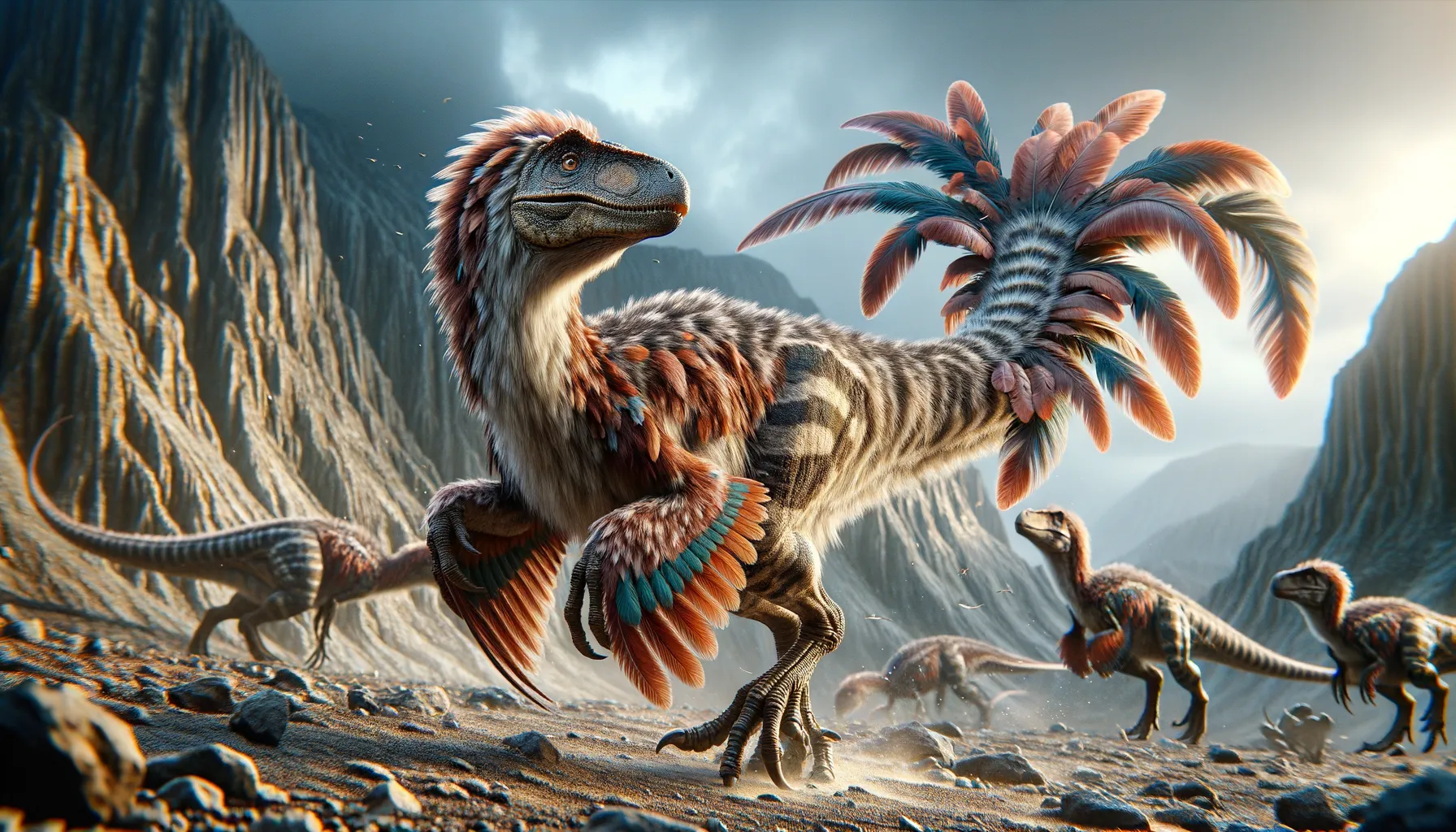
Latenivenatrix
Swift predator of the Cretaceous wilds.
Period
Cretaceous
Length
Roughly 3.5 meters in total length.
Height
About 2 meters tall at the hips.
Weight
Approximately 300 kilograms.
Latenivenatrix was a feathered troodontid dinosaur known for its keen senses and swift agility, making it an adept predator in its diverse ecosystem. Unearthed primarily in Canada, this dinosaur provides crucial insights into the evolutionary traits of small theropods. With a relatively small stature compared to other dinosaurs, Latenivenatrix displayed complex behavior and potentially had social structures. Its study highlights significant aspects of Cretaceous ecosystems.
Diet
Latenivenatrix was likely omnivorous, feeding primarily on small animals, insects, and possibly plants. Its keen senses and sharp teeth suggest it was an effective hunter, capable of capturing a variety of prey.
Hunting
As an agile predator, Latenivenatrix relied on stealth and quick bursts of speed to catch its prey. Its advanced sensory capabilities may have helped it track and ambush small animals and insects efficiently.
Environmental challenges
Latenivenatrix faced environmental challenges typical of the Late Cretaceous, including climatic fluctuations and competition for resources with other theropods. Its relatively small size necessitated adaptive strategies to survive predation by larger dinosaurs. Seasonal changes in its habitat could have influenced its migratory patterns in search of food.
Speed
Relatively fast, adapted for swift pursuits.
Lifespan
Estimated around 15-20 years.
First discovery
First described from fossils found in Canada in 2017.
Fun Facts
- Latenivenatrix was a theropod dinosaur that lived about 76 million years ago during the Late Cretaceous period.
- It is known for being one of the largest members of the troodontid family, which were generally small and bird-like dinosaurs.
- The name 'Latenivenatrix' means 'hiding huntress,' highlighting its presumed stealthy hunting methods.
- Fossils of Latenivenatrix were discovered in the Dinosaur Park Formation in Alberta, Canada.
- Its sharp teeth and keen senses likely made it an effective predator or scavenger.
- Latenivenatrix is thought to have had very good eyesight, which would have helped it spot prey at night.
- It likely shared its habitat with other well-known dinosaurs like the armored Ankylosaurus and the duck-billed Edmontosaurus.
Growth and Development
Latenivenatrix likely experienced a rapid growth phase during its juvenile years, as evidenced by bone histology. This rapid development was crucial for reaching maturity quickly in a predator-rich environment. The growth rate slowed as it neared adulthood, focusing more on maintaining energy and finding sustenance.
Habitat
Latenivenatrix inhabited diverse environments ranging from open plains to dense forests of North America, particularly in present-day Canada. Its keen senses and adaptability made it well-suited for navigating various terrains. The region offered ample opportunities for finding food and shelter, crucial for its survival.
Interaction with other species
Latenivenatrix shared its habitat with various other dinosaurs and species, necessitating competition and cooperation alike. Its interactions often involved competing for food sources with other theropods of similar size and diet. Fossil evidence suggests possible social structures, indicating that these dinosaurs may have lived or hunted in small groups.
Natural lifespan
Latenivenatrix had an estimated natural lifespan of 15 to 20 years.
Reproduction
These dinosaurs are thought to have laid eggs in communal nests, providing some level of care or protection to the young. The reproductive cycle likely involved seasonal mating patterns with rituals to attract partners.
Social behaviour
While fossil evidence is limited, Latenivenatrix may have demonstrated social behavior, possibly engaging in group hunting or living in small familial units. Communication through vocalizations or visual displays could have been key to its social interactions.
Fossil locations
Fossils of Latenivenatrix have been primarily located in the Dinosaur Park Formation in Alberta, Canada. These finds have been crucial in understanding the distribution of troodontids in North America. Ongoing studies continue to search in similar formations to uncover more about its ecology and behavior.
